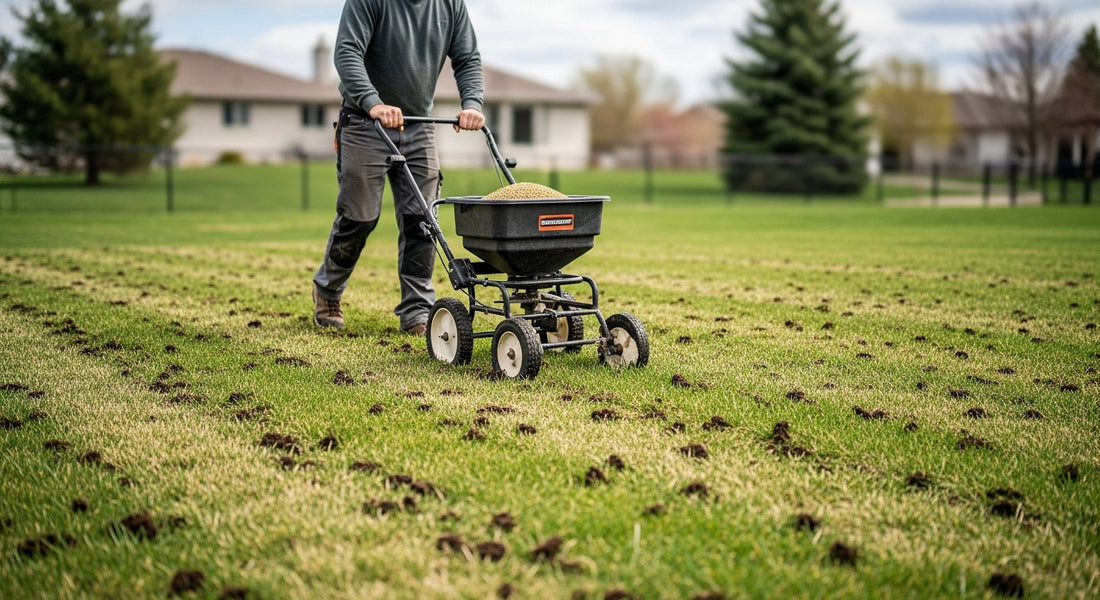
How to Overseed Your Lawn for a Thicker, Greener Turf
Share

Have you ever wondered how some people achieve that incredibly thick, lush, carpet-like lawn? While proper mowing and fertilizing are essential, the secret weapon is often overseeding. What is overseeding? It's the simple process of spreading grass seed over your existing lawn. This practice is incredibly effective for filling in bare patches, improving the density of your turf, and introducing stronger, more resilient grass varieties. Knowing how to overseed a lawn correctly is a small project that can lead to a major lawn upgrade. While it can sometimes be done in spring, the best time to overseed for most cool-season grasses is typically in the early fall.
Step 1: Preparation is Key
You can't just throw seed onto your lawn and expect great results. Proper preparation is crucial to ensure the new seeds make good contact with the soil.
-
Mow Short: Cut your lawn shorter than usual, around 1.5 to 2 inches high. This allows the new seeds to reach the soil surface more easily and receive adequate sunlight. Bag the clippings during this mow.
-
Dethatch: Thatch is the layer of dead grass and organic matter between the green blades and the soil. A thick layer can prevent seeds from reaching the soil. Use a power rake or a manual dethatching rake to remove this layer.
-
Aerate: This is arguably the most important step for successful overseeding. Lawn aeration and overseeding go hand-in-hand. Core aeration pulls small plugs of soil out of the lawn, relieving compaction and creating thousands of small pockets where grass seed can fall in, ensuring excellent seed-to-soil contact, which is vital for germination.
Step 2: Choosing the Right Grass Seed
Not all grass seed is created equal. Choosing the right grass seed for overseeding is critical for a uniform look.
-
Understand Your Grass Type: Try to identify the type of grass currently in your lawn (e.g., Fescue, Kentucky Bluegrass, Ryegrass). You'll want to choose a seed blend that is compatible with your existing turf.
-
Select High-Quality Seed: Look for seed specifically labeled for overseeding or for your region's climate. High-quality seed will have a higher germination rate and fewer weed seeds. Read the label to understand the blend of grass types included.
Step 3: Spreading the Seed
Even distribution is key to avoiding a patchy result.
-
Use a Spreader: A broadcast (rotary) spreader is ideal for larger lawns, casting the seed in a wide arc. A drop spreader is more precise and better for smaller areas or applying seed near garden beds where you don't want it to scatter.
-
Follow Recommended Rates: The seed bag will specify the recommended application rate for overseeding (which is usually about half the rate for starting a new lawn). Calibrate your spreader according to the manufacturer's instructions to apply the correct amount. Make two passes over your lawn in a perpendicular pattern (like a grid) to ensure even coverage.
Step 4: Watering for Germination
This is the most critical phase after spreading the seed. New grass seed needs consistent moisture to germinate.
-
Light and Frequent Watering: Unlike established lawns that need deep, infrequent watering, new seed requires the top layer of soil to stay consistently moist. This means watering lightly, once or twice a day (morning is best), for the first 10-14 days. You don't want puddles, just enough to keep the seeds damp.
-
Transitioning Back to Normal: Once the new grass has germinated and started to grow (usually after 2-3 weeks), you can gradually reduce the frequency of watering while increasing the duration, transitioning back to a deeper, less frequent schedule that encourages strong root growth.
Conclusion: A Small Project for a Major Lawn Upgrade
Overseeding is one of the most effective ways to significantly improve the health, thickness, and appearance of your lawn. By properly preparing the soil, choosing the right seed, and committing to the crucial initial watering schedule, you can turn a
